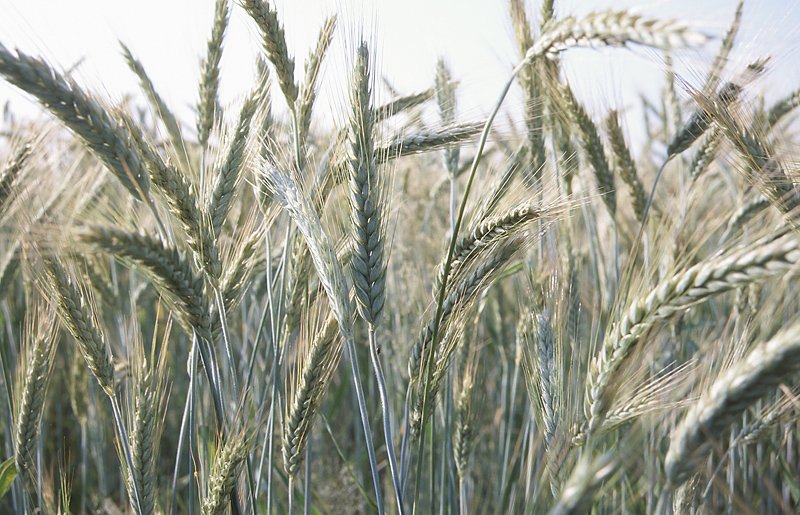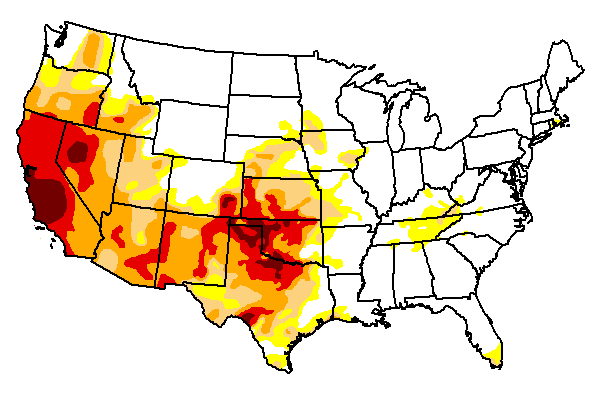This guest post by Dr. Mike Yoder with NC State University’s Department of Animal Sciences looks at the impacts of weather and climate on agriculture.
President Ronald Reagan once noted that “the American farmer is in a business that makes a Las Vegas craps table look like a sure thing.” The President understood that weather, climate and market conditions — factors over which a farmer has little control — make agriculture an inexact science.
In the days since Mr. Reagan led our nation, agriculture has changed dramatically. Farmers now plant seeds that produce more bushels per acre while using fewer inputs, like fertilizer and water, use GPS to enhance efficiency of field operations, and produce food more efficiently than ever before. Science is decreasing the risk of doing business in an environment where weather and climate still largely dictate the success or failure of production agriculture.
Earlier this week, we broke down the four main weather factors for plant growth. Today, we’ll look at the state of agriculture in North Carolina and the United States and the sensitivities to these weather factors.
Agriculture in North Carolina
North Carolina is a highly diverse agricultural state, growing sage, peanuts, cotton, tobacco, corn, soybeans, grapes, tomatoes, and many other crops. This is only possible because North Carolina has a relatively long growing season and varying climates as you move from the coastal plains in the east through the mountains in the west.
Our diversity is further enhanced by the farmers’ opportunity for double-cropping, where one crop is grown and harvested early in the summer and a second crop may be planted afterwards. In our state, farmers often double crop using wheat followed by soybeans. The opportunity to harvest two crops each year enhances cash flow and is another way to reduce the risks associated with crop production.

Farmers often have one primary crop that they rely on to generate substantial income but may have multiple secondary crops in production at the same time. While one crop benefits from a dry or wet climate, another crop may require just the opposite for optimum growth. Corn that is growing rapidly in early June will benefit from precipitation and enhanced soil moisture. At the same time, a farmer harvesting hay needs 3 to 5 days of dry weather to reduce the plant moisture content so the hay may be baled. Too much moisture, in the form of precipitation or humidity, can make it difficult to harvest hay.
During June, wheat is usually ready for harvest in North Carolina. Wheat will dry down after it matures, but high humidity or rainfall can keep grain moisture levels high enough to delay the harvest. Additionally, the longer a crop sits in the field waiting for ideal harvest conditions, the greater the chances are that the crop may experience damage from high winds or disease. In normal years (if there is such a thing) the climate in North Carolina is such that farmers are able to juggle the field operations required to successfully grow multiple crops.
Agriculture in the US
Each year, agriculture contributes more than $200 billion to the United States economy. This is impressive considering the complexity of crop and livestock production. Weather and climate contribute greatly to this complexity and largely dictate what may or may not be grown in a given region of the country.

A good example of this is the drought being experienced in our south central and western states. In the past five years, farmers have had to sell hundreds of thousands of cattle because pastures and rangeland have been devastated by a lack of rain, resulting in their inability to feed livestock. As a result, beef prices in the supermarket are higher. Because hay and other forms of forage are being directed to the drought-stricken region, hay prices nationwide have risen. The drought has driven many farmers from the profession and is putting greater stress on fragile aquifers, as surviving producers have had to increase irrigation to realize any crop production.
US agriculture is responsible for more than 30% of the corn, wheat and rice on the global market. In addition, the US produces more high-protein meat than any other country in the world. While floods, drought, disease, and extreme heat and cold can have local and even regional implications for crop and livestock production, the US is fortunate to enjoy a climate that is largely conducive to production agriculture.
Sources:
- Weather and Crops by S.E. Hollinger and J.R. Angel, from the Illinois Agronomy Handbook
- Global Climate Change Impacts in the United States from the United States Global Change Research Program
- The 2011 Statistical Abstract: International Statistics from the U.S. Census Bureau